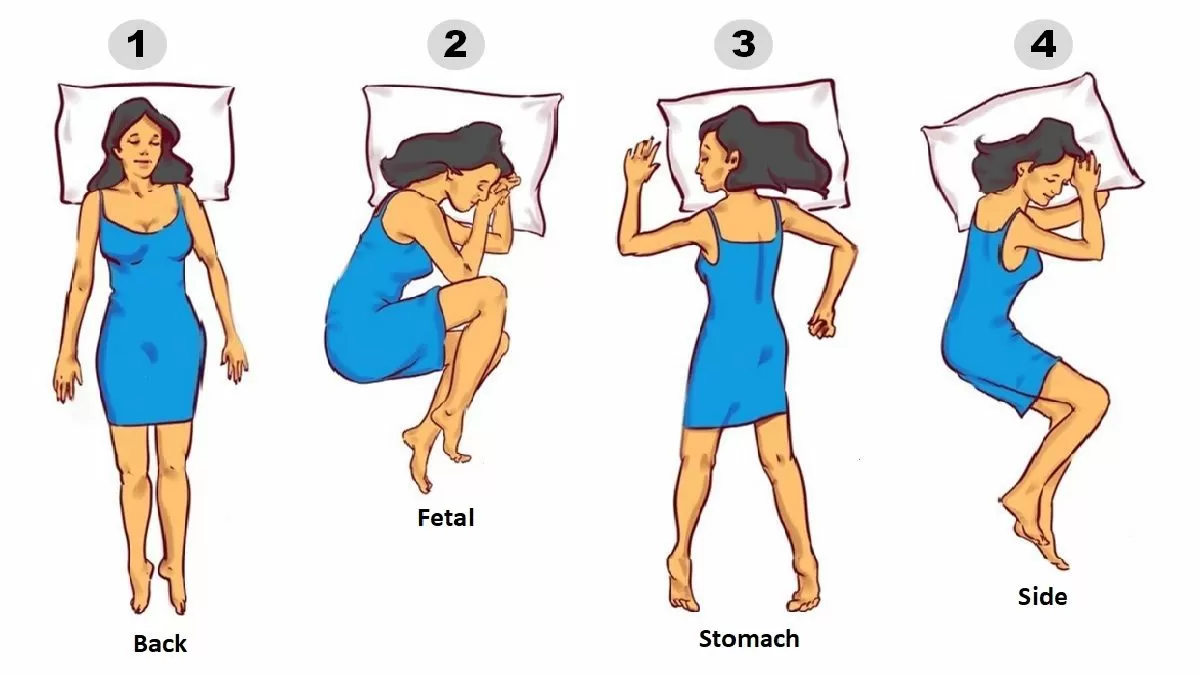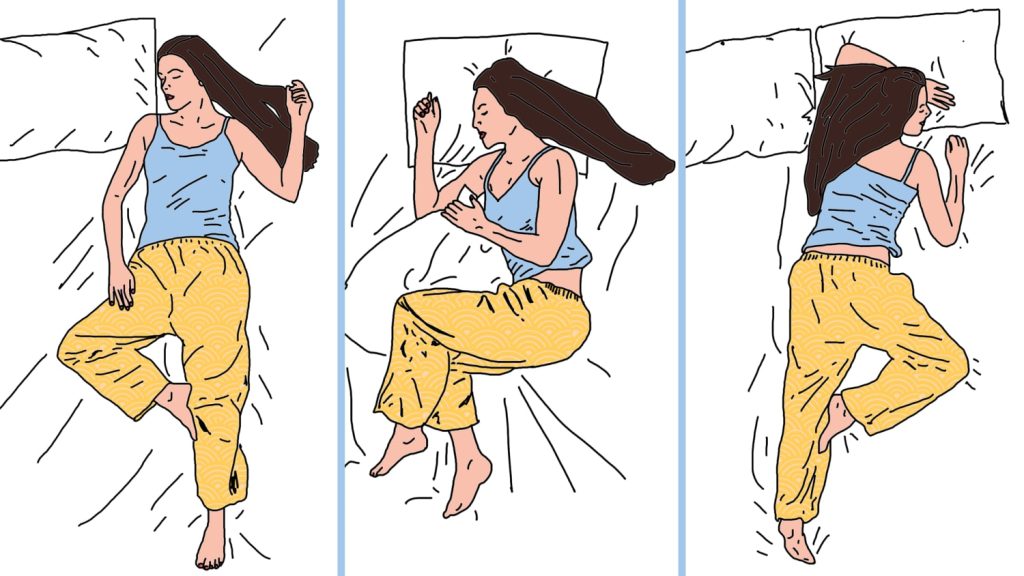The position you sleep in can make or break your night’s rest—and your next-day comfort. Side sleeping is the most popular choice, favored by over 40% of people, and often recommended by sleep experts for its spine-friendly benefits. But the “best” position isn’t one-size-fits-all. Your ideal sleep posture depends on your specific health concerns, from back pain and sleep apnea to pregnancy and acid reflux. Understanding how your sleep habits affect your body can help you wake up feeling refreshed instead of stiff and sore.
Why Your Sleep Position Matters for Health
When you think about it, we spend roughly a third of our lives asleep. That’s a huge amount of time for our bodies to be in one primary position. The way you’re positioned during those hours has a direct impact on your spinal alignment, breathing, circulation, and even how well your body recovers overnight.
Getting it right means your muscles can fully relax and repair. Getting it wrong can lead to waking up with new aches and pains or making existing ones worse. It’s not just about comfort; it’s a fundamental part of your long-term health.
How Sleep Position Affects Spinal Alignment
The main goal during sleep is to maintain a neutral spine. This means keeping your spine in a straight line from your head all the way down to your hips. When your spine is properly aligned, it relieves pressure on your entire musculoskeletal system.
A neutral position allows the small muscles supporting your vertebrae to relax, reducing tension and preventing that dreaded morning stiffness. If your position forces your neck to twist or your lower back to arch unnaturally, you’re putting stress on your joints and muscles all night long.

Impact on Breathing and Circulation
Your posture also plays a big role in how well you breathe. Certain positions can cause your airway to become partially blocked, leading to snoring and worsening symptoms of sleep apnea. Gravity is a major factor here. It can pull your tongue and soft tissues in your throat backward, narrowing the passage for air.
Proper positioning can also enhance blood flow. For example, sleeping on your left side can improve circulation and take pressure off major organs, which is especially important during pregnancy. It’s all connected—better breathing and circulation lead to deeper, more restorative REM sleep.
Side Sleeping: The Most Popular Position
If you’re a side sleeper, you’re in the majority. It’s a natural, comfortable position that many of us default to, whether curled up in a fetal position or stretched out like a log. From my experience, it’s often recommended by physical therapists for good reason, but it does require the right setup to be truly effective.
Benefits of Sleeping on Your Side
Side sleeping comes with a solid list of health benefits. For starters, it’s great for keeping your airway open, which can significantly reduce snoring and symptoms of obstructive sleep apnea. It also helps maintain that neutral spinal alignment, especially if you use pillows correctly.
One of the most interesting benefits is its potential impact on brain health. Research suggests that side sleeping may help the brain clear out waste more efficiently through the glymphatic system, which could play a role in reducing the risk of neurological conditions. It’s also often the go-to recommendation for anyone dealing with lower back pain or acid reflux. For a full routine, you can check out these general sleep hygiene tips.

Left Side vs Right Side: Does It Matter?
This is a question I get a lot, and the answer is yes, sometimes it really does matter.
Sleeping on your left side is often considered the gold standard, especially if you are pregnant or experience acid reflux (GERD). In this position, gravity helps keep stomach acid down, preventing it from creeping up your esophagus. It also improves circulation to the fetus during pregnancy.
Sleeping on your right side isn’t necessarily bad, but it can put more pressure on internal organs and may worsen heartburn for some people. If you’re curious about the specifics, learning about the best position to sleep left or right can offer more detailed guidance.
How to Optimize Side Sleeping
To get the most out of side sleeping, a few small adjustments can make a huge difference.
- Place a pillow between your knees. This is a game-changer. It keeps your top leg from sliding forward, aligning your hips and reducing strain on your lower back.
- Choose the right head pillow. You need a firm, relatively thick pillow to fill the space between your ear and your shoulder. The goal is to keep your head and neck in line with the rest of your spine. The right pillow loft is key.
- Avoid tucking your chin. Curling up too tightly in a fetal position can restrict your breathing and strain your neck. Try to keep your body relatively straight.
Back Sleeping: Best for Spine Support
Sleeping on your back is the best position for letting your spine rest in a neutral alignment. Gravity does the work for you, keeping your head, neck, and spine in a straight line. This position distributes your body weight evenly, which means no extra pressure on any specific joints.
Who Should Sleep on Their Back
If you struggle with neck, back, hip, or knee pain, back sleeping could be your solution. Because it keeps your spine protected and aligned, it can relieve pressure on these sensitive areas. You just have to make sure your neck is properly supported—you don’t want it propped up too high.

Who Should Avoid Back Sleeping
Despite its benefits for alignment, back sleeping isn’t for everyone. It’s generally not recommended for people who have obstructive sleep apnea or who are chronic snorers. When you lie on your back, gravity can cause your tongue to fall back and obstruct your airway.
Pregnant women, especially in the third trimester, are also advised to avoid this position due to the pressure the uterus can place on major blood vessels, affecting circulation. The same goes for anyone who deals with frequent acid reflux.
Tips for Better Back Sleeping
If back sleeping is right for you, here’s how to do it well:
- Put a small pillow under your knees. This supports the natural curve of your lower back and can instantly relieve lumbar pressure.
- Use a lower-loft pillow for your head. You want a pillow that supports the curve of your neck without pushing your head too far forward. A cervical pillow can work wonders here.
- Keep your arms by your sides. Spreading them out can sometimes create shoulder tension.
Stomach Sleeping: The Least Recommended Position
I’ll be direct: stomach sleeping is the position most experts advise against. Only a small percentage of people sleep this way, and for good reason. It puts a lot of strain on your body, even if it feels comfortable at first.
Potential Benefits and Major Drawbacks
The only real potential benefit is that for some people, it might reduce snoring by keeping the airway open. However, the drawbacks are significant.
To breathe, you have to turn your head almost 90 degrees to one side, which twists your neck and cervical spine for hours. This can lead to serious neck pain and nerve compression. It also flattens the natural curve of your lumbar spine, which can cause lower back pain over time.

Making Stomach Sleeping Safer
If you absolutely can’t break the habit, there are ways to reduce the harm.
- Use a very thin pillow or no pillow at all. This minimizes the angle of your neck twist.
- Place a flat pillow under your pelvis and lower abdomen. This can help take some of the pressure off your lower back and maintain a more neutral spinal position.
- Try to alternate which way you turn your head to avoid creating a muscle imbalance.
How to Change Your Sleep Position
Changing a lifelong sleep habit isn’t easy, but it is possible with a little patience and the right strategy. Don’t expect it to happen overnight. It can take a few weeks for a new position to feel natural. If you’re stressed, it can be even harder to sleep differently, and finding ways for how to sleep when stressed is a critical first step.
Practical Tips for Position Training
- Use a pillow barricade. This is my favorite trick. Use a body pillow or arrange several regular pillows around you to physically prevent yourself from rolling into your old position.
- Start the night in your desired position. Even if you move later, consciously starting in the new position helps build the habit.
- Be patient. You will likely wake up in your old position many times. Just gently guide yourself back to the new one and try again. If you’re trying to reset your internal clock at the same time, here’s some advice on how to fix your sleep schedule.

Choosing the Right Pillow and Mattress
Your gear matters. You can’t expect to comfortably switch positions without the right support.
- Pillow: Side sleepers need a thicker, firmer pillow. Back sleepers need a thinner one that supports the neck. Stomach sleepers need the thinnest pillow possible.
- Mattress: Your mattress should support your body’s natural curves. Side sleepers often do well with a slightly softer surface that allows their shoulders and hips to sink in, while back sleepers need a medium-firm mattress to maintain alignment. Mattress firmness is not a one-size-fits-all thing.
Finding Your Best Rest
Ultimately, the best sleep position is the one that allows you to wake up feeling rested and pain-free. While side and back sleeping offer the most health benefits for most people, what matters is listening to your body. Experiment with different pillow placements and supports to find what feels right for you. Small changes can lead to a big improvement in your sleep quality and overall well-being.
For more insights into building a healthier lifestyle, feel free to explore more on www.notonetype.org.
Frequently Asked Questions (FAQ)
1. What is the overall healthiest sleep position?
For most people, sleeping on your side is considered the healthiest position. It supports spinal alignment, keeps airways open to reduce snoring and sleep apnea, and is particularly beneficial for digestion and brain health. Back sleeping is a close second, especially for those with neck or back pain.
2. Is it bad to sleep on your right side?
It’s not inherently “bad,” but sleeping on your left side offers more benefits, especially for pregnant individuals and those with acid reflux. The left side position aids circulation and uses gravity to keep stomach acid down. If you don’t have these specific conditions, sleeping on your right side is generally fine.
3. How can I stop sleeping on my stomach for good?
The most effective method is using pillows as a barrier. A full-body pillow is excellent for this. Place it alongside you to physically prevent you from rolling onto your stomach. It takes time, so be consistent and patient for a few weeks as your body adapts.
4. Does my mattress firmness really affect my sleeping position?
Absolutely. The right mattress helps you maintain a healthy posture all night. Side sleepers typically need a medium-soft to medium mattress to cushion their shoulders and hips, while back sleepers do better on a medium-firm surface that prevents their lower back from sinking too much.


You may also like this
How to Sleep Early: Practical Steps to Shift Your Bedtime
Struggling to fall asleep early? You’re not alone. For years, I was a night owl,...
Nov
Best Color Light for Sleep: Red, Amber & Warm Light Guide
Choosing the right color of light for your bedroom can make a real difference in...
Nov
How to Sleep When Stressed: Easy Tips for Better Rest
Stress can make falling asleep and staying asleep feel impossible. When you’re stressed, the body’s...
Nov
Best Position to Sleep: Left Side or Right Side?
Have you ever woken up feeling stiff or noticed that late-night snack didn’t sit so...
Nov
How to Fix Your Sleep Schedule: Practical Tips for Better Sleep
Feeling like a zombie during the day and wide awake at night? I’ve been there....
Nov
Sleep Hygiene Tips: 15+ Proven Ways to Sleep Better Tonight
Sleep hygiene is one of the simplest yet most effective ways to reclaim quality rest....
Nov